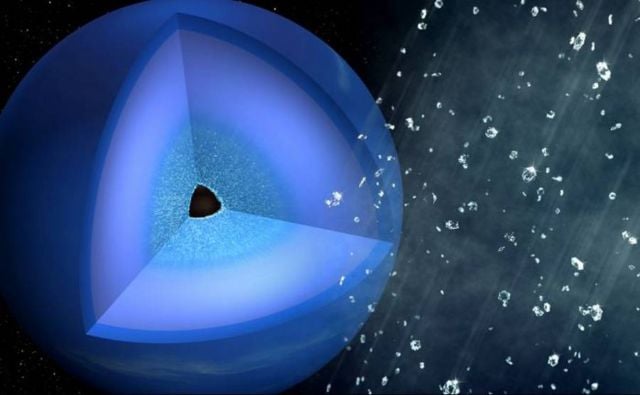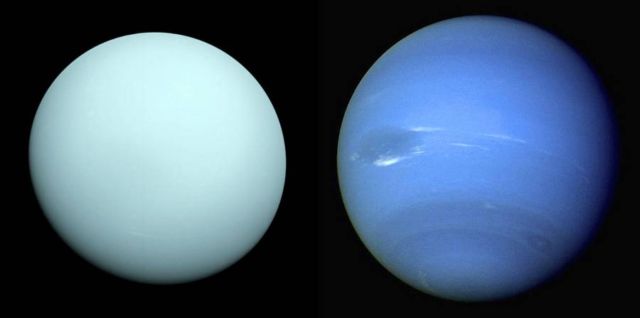Scientists believe that “diamond rain” exists in the interiors of ice giant planets like Uranus and Neptune.
Scientists created this experiment, titled “Formation of Diamonds in Laser-Compressed Hydrocarbons at Planetary Interior Conditions“, recently appeared in the journal Nature Astronomy.
Above, image credit: Greg Stewart/SLAC National Accelerator Laboratory
The experiment led by Dr. Dominik Kraus, a physicist from the Helmholtz-Zentrum Dresden-Rossendorf Institute of Radiation Physics, shows that the depths of these ice giant planets are perfect for the formation of diamonds.
“So far, no one has been able to directly observe these sparkling showers in an experimental setting. In our experiment, we exposed a special kind of plastic – polystyrene, which also consists of a mix of carbon and hydrogen – to conditions similar to those inside Neptune or Uranus.”
The effects of hydrocarbon reactions and diamond precipitation on the internal structure and evolution of icy giant planets such as Neptune and Uranus have been discussed for more than three decades. Inside these celestial bodies, simple hydrocarbons such as methane, which are highly abundant in the atmospheres, are believed to undergo structural transitions that release hydrogen from deeper layers and may lead to compact stratified cores.
Ice giant planets Uranus and Neptune. Image credit Wikimedia
via universetoday







Leave A Comment